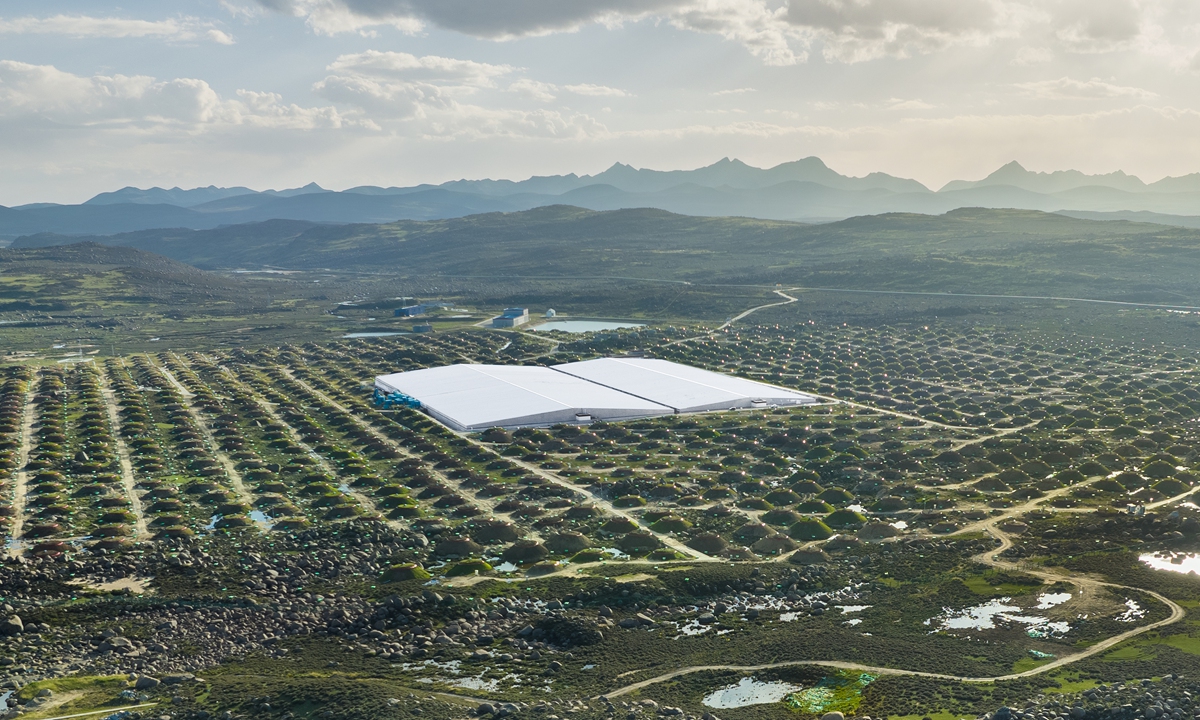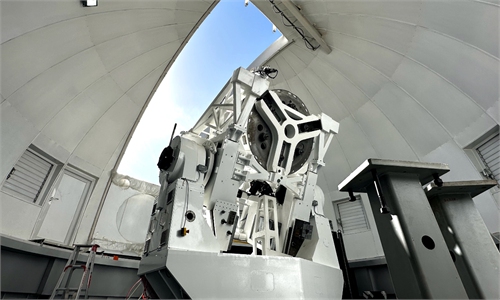LHASSO, world's most sensitive ultra-high-energy gamma ray detector installation, enters operation

Aerial photo of LHAASO taken in 2022. Photo: Courtesy of the Institute of High Energy Physics
The Large High Altitude Air Shower Observatory (LHAASO) project, one of China's major national scientific and technological infrastructure facilities, has passed national acceptance and formally entered operation, the Global Times learned from the project constructors on Thursday.
LHAASO, which is a facility focusing on cosmic ray observation and research, received state approval from the National Development and Reform Commission on December 31, 2015.
It was sponsored by the Chinese Academy of Sciences (CAS) and the provincial government of Southwest China's Sichuan Province, the Chengdu Branch of CAS and the Institute of High Energy Physics (IHEP) of CAS told the Global Times in a statement.
Construction of the project began in 2017 and was completed in 2021. After extensive site evaluation and field investigation, Daocheng county in Sichuan Province was chosen as the site. LHAASO has become one of the most important particle astrophysical experiments in the world, placing China at the forefront of particle astrophysics research on the origin of high-energy cosmic rays, one of the most important frontier topics in science today, according to the IHEP.
The project passed an acceptance inspection by five professional teams organized by CAS that covered technical performance, construction and installation, financial matters, equipment and assets and archives.
LHASSO is located 4,410 meters above sea level on Haizi Mountain, and the site covers about 1.36 square kilometers.
It consists of three arrays: A shower particle detector array composed of 5,216 electromagnetic particle detectors and 1,188 ground-buried muon detectors covering 1 square kilometer; a water Cherenkov detector array covering 78,000 square meters, and a telescope array composed of 18 wide-field-of-view Cherenkov telescopes.
Using these three arrays that deploy four detector technologies, LHAASO will be able to measure gamma rays and cosmic rays generated by high-energy celestial objects omnidirectionally with multiple variables, the IHEP explained.
According to the IHEP, taking advantage of the high altitude at the roof of the world, LHAASO has become the most sensitive ultra-high-energy gamma ray detection instrument in use today, the most sensitive high-energy gamma ray wide-field-of-view survey telescope system in the world, and the compound stereoscopic cosmic ray measuring system in the "knee region" with the widest energy coverage in the world.
Based on its high detection sensitivity, LHAASO has made significant scientific breakthroughs during its initial stages of operation.
For example, LHAASO discovered a large number of ultra-high-energy cosmic accelerator candidates in the Milky Way and detected the highest energy photon ever recorded, thus launching an era of "ultra-high-energy gamma astronomy."
LHAASO also accurately measured the luminosity of the "standard candle" in the ultra-high-energy band and discovered gamma rays with energy over 1 quadrillion electron volts, which challenges the theoretical limit. Many observations were made during the construction of LHAASO, and scientific results continued to be produced.
About 215 journal papers and 156 conference papers on the LHAASO project have been published so far, officials said.


